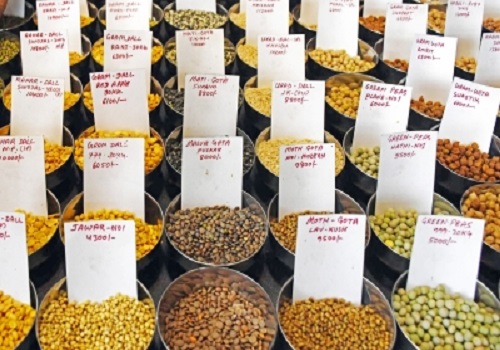Mustard Marvel: Navigating Challenges, Aiming High for 2023-24 Harvest by Amit Gupta, Kedia Advisory

Amidst a 40% growth backdrop, the mustard sector eyes a 4% rise in 2023-24, with Uttar Pradesh leading a 32% acreage surge. Despite concerns in Rajasthan, where farmers shift to spices, favorable weather and expert optimism hint at achieving the targeted 13.1 million-tonne production.
Highlights
Mustard Production Trends: Mustard production has witnessed substantial growth of nearly 40% between 2019-20 and 2022-23. However, achieving a similar growth rate in the current year seems challenging, with the government setting a modest target of a 4% rise in production for 2023-24.
Acreage Changes: The overall area under mustard and rapeseed has increased to 95.23 lakh hectares as of December 22, showing a 2% rise from 93.46 lakh hectares. Uttar Pradesh stands out with a significant 32% increase in acreage, while Rajasthan, a major producer, experienced a 1.6 lakh hectare drop.
Regional Variations in Planting: Certain states like Ladakh, Maharashtra, Manipur, and Tripura report no planting of mustard. In the North-East, the planned increase in areas has not been successful, with total mustard acreage slightly lower than the previous year.
Weather Conducive for Mustard Growth: Despite challenges in achieving previous growth rates, the weather has been favorable so far. No reports of diseases like white rust or pest attacks on mustard have been noted. The impact of El Nino, though speculated, has not been observed on the ground.
Role of Rajasthan in Mustard Production: Rajasthan plays a crucial role, contributing 40-45% of the country's overall mustard production. Changes in the state, such as a shift of farmers to spice crops, could impact mustard acreage and production.
Government Target and Farmer Sentiments: The Agriculture Ministry has set a mustard production target of 131.4 lakh tonnes for the 2023-24 crop year, up from the estimated actual output of 126.43 lakh tonnes in 2022-23. Farmers in Rajasthan reportedly have a negative sentiment toward mustard, leading to a shift to spice crops.
Concerns and Hopes for Mustard Yield: Some experts express concerns about the fall in acreage and negative sentiment in traditional mustard-growing areas, citing factors like higher-than-normal temperatures and lower market prices. However, others remain hopeful of a better yield and higher production, emphasizing the need for government support through 100% procurement at the minimum support price (MSP).
Call for Government Support: Farmer representatives call for government support, highlighting the importance of policies that ensure domestic farmers are encouraged through assured purchase at MSP, rather than supporting international soybean or palm oil farmers.
Summary
As mustard production charts an ambitious course, regional dynamics, shifting farmer sentiments, and government support play pivotal roles. While challenges persist, the mustard marvel remains resilient, banking on conducive weather and strategic interventions to fulfill the promising 2023-24 harvest targets. The sector exemplifies adaptability, with stakeholders hopeful of a flourishing future for this essential winter oilseed.
Above views are of the author and not of the website kindly read disclaimer










More News

Gold Price Slips Below $2,900 Amid Stronger USD, Market Uncertainty by Amit Gupta, Kedia Adv...











